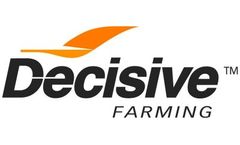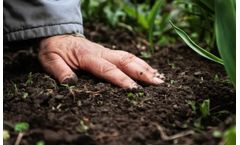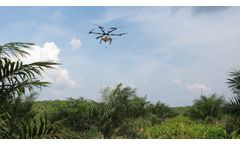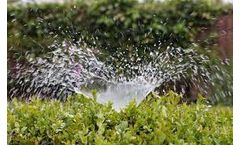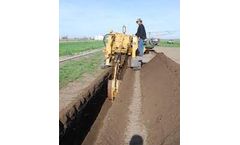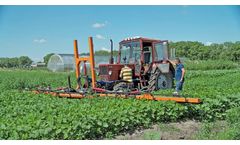Refine by
Herbicide Articles & Analysis
168 articles found
The molecular formula C12H14F5N3O4S succinctly encapsulates the complexity of its structure, emphasizing its role as a synthetic herbicide designed for optimal performance in diverse environmental conditions. ...
The molecular formula C12H14F5N3O4S succinctly encapsulates the complexity of its structure, emphasizing its role as a synthetic herbicide designed for optimal performance in diverse environmental conditions. ...
However, in order to improve food production, pesticide/herbicide is widely used in agriculture. Over-use of pesticides can lead to hazardous chemicals entering the food chain. ...
Wang et al (2010) have shown that Activated Carbon has good sorption qualities with regard to the hydrophobic herbicide terbuthylazine and underline the important role it can play in protecting ground water. Graber et al. (2011) studied the binding qualities of the model herbicides S-Metolachlor and Sulfentraton on Activated Carbons with different surface sizes. ...
Herbicide users have a total number of points that they must meet for a given herbicide, crop and area. ...
The use of auxins in agriculture has also resulted in a reduction in the use of synthetic herbicides and pesticides. By promoting healthy plant growth, auxins help to reduce the population of pests and diseases, negating the need for harsh chemicals. ...
Mechanical harvesting versus chemical herbicides is the great debate when it comes to tackling water weed problems. ...
When farmers or agronomists go into a field they are often there for one specific reason, whether it be herbicide timing looking for weeds, fungicide timing looking for disease and staging or something else, but this encourages tunnel vision and you can get too caught up only looking for one thing. ...
With quick, reliable access to your agronomic information, crop planning is a breeze. Whether it’s herbicide history or soil test results from a particular field, year-over-year data provides instant insights, so you can make an informed decision for tomorrow. ...
Sometimes that causes us to shorten rotations or deal with herbicide carryover, which Donald says is common considering record-high commodity prices. ...
Reduced Chemical Applications While farmers still use chemical pesticides, herbicides and pesticides in their farming systems, the modern-day level l of precision data and automation has given farmers the ability to fine-tune their agronomic decisions and greatly reduce the chemicals they use. Rather than over-applying fertilizer to guarantee high yields, farmers now only apply ...
ByAGRIVI
Worldwide these result to 16% of all the insecticides and 7% of all herbicides used. Cotton is also a very thirsty crop adding more pressure on our natural resources. ...
Digital record-keeping supports stronger farm teams We’ve evolved from the days of working in our heads or writing things down. Data-driven farming technologies are creating opportunities in an evolving landscape where access to real-time, instantly shareable information is a must for optimal performance. Thanks to digital-record keeping, entire farm teams can now work on the same page ...
Agribusiness is responsible for many economic aspects of food production, including seed and fertilizers, pesticides and herbicides, livestock feed, processing plants, and machinery used to harvest grain crops. ...
The system features a tube with a bactericide lining with an internal plug resistant emitter protected from root intrusion by an impregnated herbicide. A PLC with special software and a wireless phone connection provides for off-site control. ...
This second product incorporates a herbicide into the plastic which is continuing to provide protection from roots after five years of service. ...
The reasons are many, including the absence of surface evaporation, as well as reduced weed growth, herbicide washout, maintenance, injury, and vandalism found with using conventional water application systems. ...
It includes buried drip irrigation incorporating sustained release herbicide impregnated drip emitters and antimicrobial lined tubing. As a result of this initial success the system was expanded in 2004 as part of the Omaha South Stage 2 development. ...
This second product incorporates a herbicide into the plastic which is continuing to provide protection from roots after five years of service. ...
Probably the most cost-intensive and time-consuming operation in organic farming is the elimination of weeds at different stages of plant development. Due to the impossibility of herbicides application, the processing must be performed mechanically. ...




